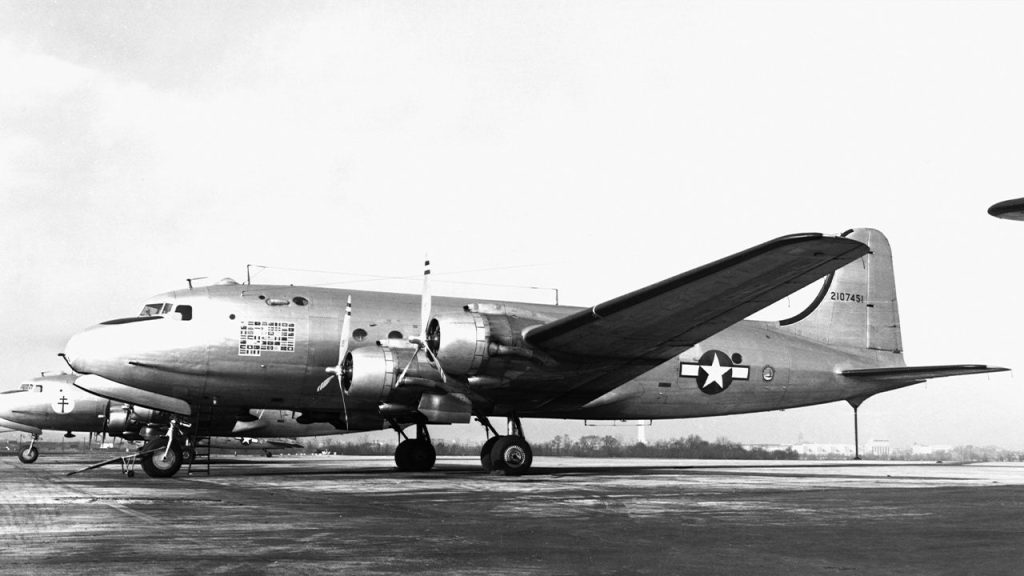A World War II-era Douglas C-54 plane crashed along the Tanana River near Fairbanks, Alaska, according to Alaska State Troopers. The Federal Aviation Administration confirmed that two people were on board the aircraft at the time of the crash, which occurred shortly after the plane took off from Fairbanks International Airport. Local, state, and federal agencies were all responding to the crash site and urged people to avoid the area. Additional information will be released as it becomes available, and the investigation into the crash is ongoing.
The Douglas C-54 was a four-engine propeller transport aircraft used by the U.S. Air Forces during World War II and the Korean War. The crash is currently being investigated, and the cause of the crash has not been determined. John Dougherty, a trooper’s spokesperson, did not provide additional information when reached for comment. The crash site was expected to have an increased first responder presence as agencies work to respond to the incident.
With the crash happening shortly after the plane took off, there are still many unanswered questions surrounding the tragic event. The National Guard, along with local, state, and federal agencies, are working to gather more information and determine the cause of the crash. As the investigation unfolds, more details will be released to the public, and any updates on the situation will be provided. The crash site has been marked as a no-fly zone as authorities work to secure the area and investigate the circumstances leading to the crash.
The crash of the World War II-era plane is a tragic event that has impacted the local community and raised concerns about aviation safety. With two people on board the aircraft at the time of the crash, there are fears for their safety and well-being. However, authorities are working diligently to respond to the incident and gather more information about what led to the crash. The site of the crash has been secured, and efforts are underway to investigate the cause of the crash and prevent similar incidents in the future.
As the investigation into the crash continues, authorities are urging the public to avoid the area and allow first responders to do their work. The crash site is currently being treated as a no-fly zone, and additional information will be released as it becomes available. With local, state, and federal agencies all responding to the scene, efforts are being made to gather information about the crash and ensure the safety and well-being of those involved. The community is urged to stay updated on developments regarding the crash and to provide any information that may help authorities in their investigation.
This developing story is a reminder of the risks associated with aviation and the importance of safety protocols in place to prevent accidents. The crash of the World War II-era plane has sparked concerns about the safety of old aircraft and the need for thorough inspections and maintenance. As authorities work to determine the cause of the crash, the community is called upon to support the response efforts and provide any information that may be helpful in the investigation. The impact of the crash extends beyond the immediate incident, raising questions about aviation safety and the measures in place to prevent similar tragedies in the future.


